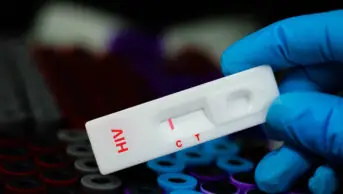
Somto Madueke

In a report published by the General Pharmaceutical Council (GPhC) last year, disparities in performance were observed between students of different ethnicities sitting the preregistration exam.
Alarmingly, students of black African ethnicity continued to have the lowest pass rates compared with other ethnicities. This may not come as a surprise to some because ethnic disparities continue to be a prevalent societal problem yet to be fully addressed. Although there are no clear-cut solutions to issues faced by black students, this blog will attempt to highlight ways in which schools of pharmacy can become part of the solution and better represent black, Asian and minority ethnic (BAME) groups.
In the GPhC report, feelings of isolation, greater family responsibilities and explicit prejudice were experienced by black African students, particularly mature students. Although these issues are faced by preregistration trainees, schools of pharmacy should not turn a blind eye to these issues, as they may also be prevalent within their department. I for one, believe that universities need to be more proactive in their approach to solving these issues of disparity. For instance, consider providing safe spaces where BAME students can express their concerns, frustrations, seek support and feel represented. This could be anything from social events to more formal meetings with heads of departments where issues can be raised and subsequently addressed. In addition, schools of pharmacy should consider appointing members of staff to act as BAME representatives, whose responsibilities include, but are not limited to, overseeing activities that ensure BAME students’ stories and experiences are being heard, and that solutions to issues are discussed and actioned.
Tertiary institutions are also able to promote having BAME pharmacy student ambassadors, who can share their experiences of the course with other students, as a way of empowering BAME peers to seek support or to share their stories, and foster a sense of belonging. Publishing blogs and vlogs via social media is a good example of how this initiative can be spread to a wider audience. Moreover, schools of pharmacy need to ensure that every member of staff is committed to tackling issues of racial inequality. This can be achieved by building greater staff awareness of issues faced by BAME students through open discussions, such as staff workshops on equality and diversity, dedicated staff newsletters on the issue and provision of resources that further shed light on the topic. Consequently, this might provide staff with the confidence and skills to engage in difficult conversations pertaining to ethnic disparities, as well as to encourage them to incorporate changes in how they deliver their lecture materials to BAME students, in order to support their success.
Course co-ordinators may want to consider how they could develop and deliver their curriculum with the involvement of BAME students, in order to ensure a more inclusive learning experience. For example, incorporating a targeted mentorship scheme, where BAME students can interact with mentors or other role models (for example, alumni).
From my own experience, being mentored by a black professional who is thriving within the pharmacy profession has really given me the confidence to actively engage with my learning on the MPharm degree and enhance my career aspirations. Furthermore, the above could be complemented by other initiatives that shed light on contributions made by BAME professionals to the world of science (for example, black history events).
It is important to note that although ethnic disparities are a difficult issue to discuss and manage, schools of pharmacy need to be committed to addressing these issues in order to instigate a culture change over the long term. Questions about whether or not current systems are cultivating an environment where BAME students are able to flourish need to be considered, in order to affect change that will actually break down barriers and provide an environment where every student is able to reach their full potential.
About the author:
Somto Madueke is a third-year pharmacy student at the University of Reading and two-time recipient of the Chancellor’s Award for achieving the highest course grades in his year group. Somto is also a course representative and student ambassador for the Reading School of Pharmacy.

